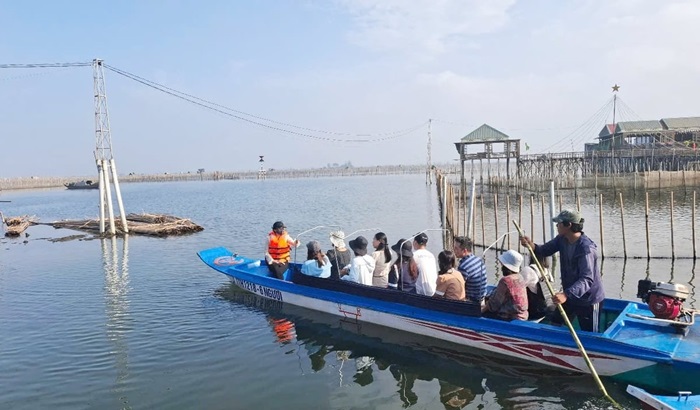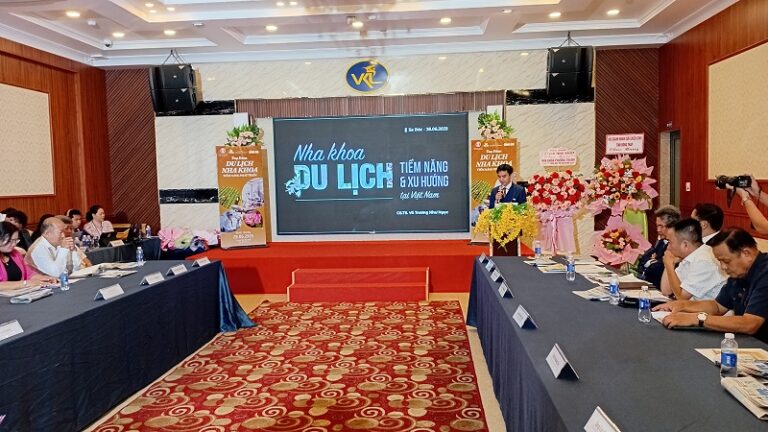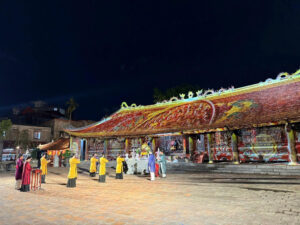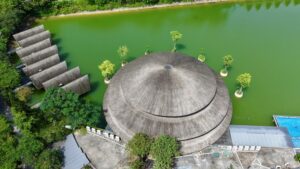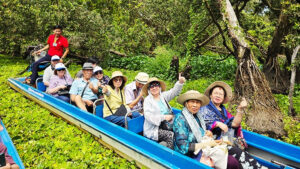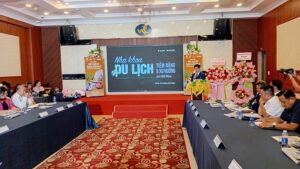The South Central provinces of Ninh Thuan and Binh Thuan are known as Vietnam’s driest region, with more and more land being threatened by desertification. But the two provinces have managed to convert their natural disadvantages into strengths for economic development.
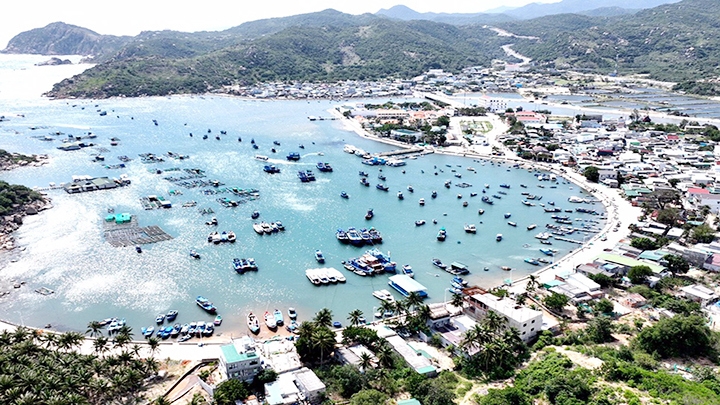
Vinh Hy Bay, a popular tourist site in Ninh Thuan Province. (Photo: Nguyen Trung)
Developing tourism from differences
The long stretches of sand along the coast were once on the opposing side of local residents in the southern tip of Vietnam’s South Central region, but now these “little deserts” have become advantageous for them with blue seas, white sands and yellow sunlight attracting droves of visitors. Furthermore, strong winds and long sunshine hours are drawing many renewable energy investors, with wind and solar farms bringing substantial economic benefits to these two provinces.
In 2010 Trieu Trang Company ventured to build a tourism zone known as Bau Trang covering hundreds of hectares comprising only white sand in Bac Binh District of Binh Thuan Province. Following the model of desert tourism in the Middle East, the company procured off-road vehicles for tourists to hire or transport tourists to explore the sand dunes. The company currently has a fleet of 30 cars and 30 motorbikes in use.
Trieu Trang’s Director Nguyen Qua said during the peak season, from June to August, the area welcomes more than 1,000 visitors each day. In addition to domestic visitors, the off-road experience in Bau Trang also attracts tourists from foreign countries such as the Republic of Korea, Thailand, Malaysia, China, Australia, and European countries.
Coastal sandy land is an outstanding feature and accounts for about 16% of Binh Thuan’s total land area. These “little deserts” have been utilised by the province to create exotic tourism products associated with sand.
Located not too far to the north of the famous tourist site of Mui Ne, local residents in Phuoc Dinh Commune are relying on the terrain where mountains meet the sea to offer appealing travel experiences that can help them increase their incomes.
In recent years with the completion of the 105-kilometre-long coastal road, Ninh Thuan Province has developed various models of coastal tourism. The province is planning to transform Mui Dinh into a centre for tourism and marine economics covering an area of 1,256 hectares in the two communes of Phuoc Dinh and Phuoc Diem in Thuan Nam District.
Ninh Thuan Chairman Tran Quoc Nam said the presence of high-end resorts developed by renowned domestic and international companies are a key factor that will help Ninh Thuan to record even more breakthroughs in tourism development in the future.
Sea and islands are also a major advantage for the southern tip of Vietnam’s South Central region to promote tourism. Phu Quy is an island district of Binh Thuan Province with an important location in terms of economic development and defence. Located about 56 nautical miles from the provincial capital city of Phan Thiet, the island has become an attractive destination to both domestic and foreign tourists in recent years.
Tran Van, a tourist from District 1 in Ho Chi Minh City, said that travelling to Phu Quy is now very convenient as ferry tickets, hotel rooms and vehicles for exploring the island can all be booked online.
Phu Quy Chairman Le Quang Vinh said the authorities are continuing to take measures to enhance the quality of tourism on the island, creating the image of Phu Quy as a safe, friendly and high-quality destination to all visitors.

Visitors riding off-road vehicles through the sand dunes in Bau Trang, Binh Thuan Province. (Photo: Dinh Chau)
Major power centre
Surveys show that the total area with wind power potential in Binh Thuan Province is 23,749 hectares, accounting for 3% of its total land area. Total installed wind capacity is estimated at 1,570 megawatts. Binh Thuan also boasts long sunshine hours as well as high and stable heat radiation, which are conducive conditions for harnessing solar energy.
In 2008, the construction of Binh Thuan’s first wind farm commenced in Tuy Phong District with an investment of 1,450 billion VND (over 62.5 million USD) and a capacity of 120 megawatts. The first phase, with 20 wind turbines for 30 megawatts, was completed in June 2011.
Four years later, also in Tuy Phong District, work began on the Phu Lac wind farm with investment from the Thuan Binh Wind Power Company (EVN TBW). The entire project was completed in 2021 with a capacity of 50 megawatts, providing over 400,000 kWh each day to the national grid.
EVN TWB Chairman and CEO Bui Van Thinh said Binh Thuan and Ninh Thuan are the two provinces with the greatest potential in wind and solar energy in Vietnam. The company has invested in a wind farm here to tap into the existing potential and wishes to transform this arid land into a centre of renewable energy.
According to the Binh Thuan Department of Industry and Trade, the province currently has eight wind projects already in operation with a total capacity of 299.6 megawatts and another 26 solar projects with a combined capacity of 1,110.11 megawatts. Such projects have become valuable sources of additional power to the national and regional power systems, producing about 2 billion kWh each year.
Binh Thuan also has the Vinh Tan Power Centre in Tuy Phong District with three coal-fired plants in operation. The centre’s total installed capacity is 4,244 megawatts. Currently Binh Thuan is supplying about 8% of total electricity for the national system.
The majority of renewable energy projects are constructed in drylands, which are not suitable for agriculture and other industries. Such a fact shows that Binh Thuan has managed to convert the disadvantages in its soil and climate conditions into strengths for development.
In neighbouring Ninh Thuan, there were a total of 49 renewable energy projects with a total capacity of 3,035 megawatts as of the end of 2021. In the three years from 2019-2021, Ninh Thuan was among the five provinces with the highest economic growth rates in Vietnam. Renewable energy is currently contributing 6.84% to Ninh Thuan’s overall growth.
By translating disadvantages into advantages for development, the southern tip of Vietnam’s South Central region has created many different and unique values. The reality has proved that Binh Thuan and Ninh Thuan are on the right course. Along with tourism, renewable energy development is expected to transform the region into one of Vietnam’s major energy centres in the near future.


